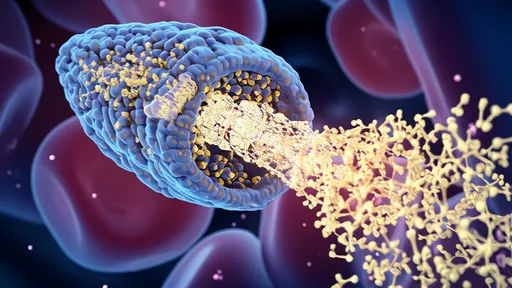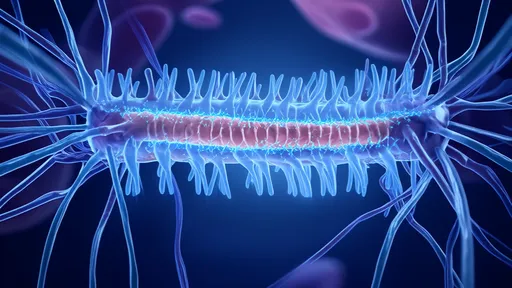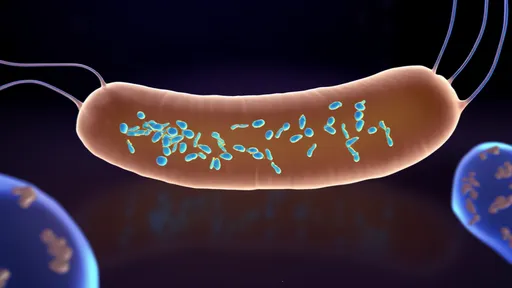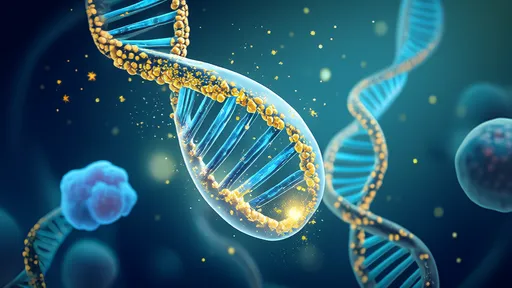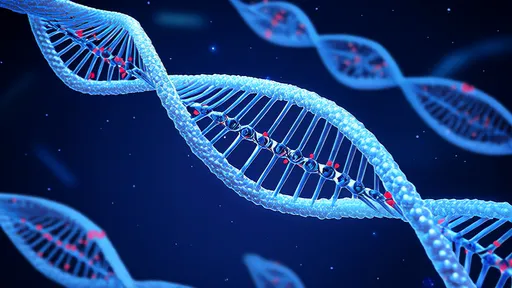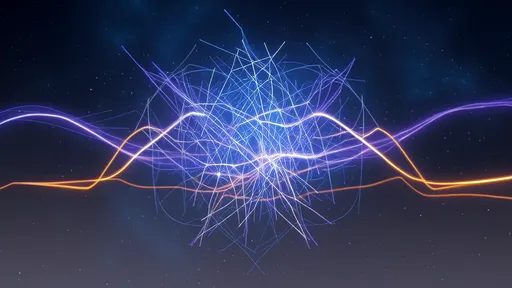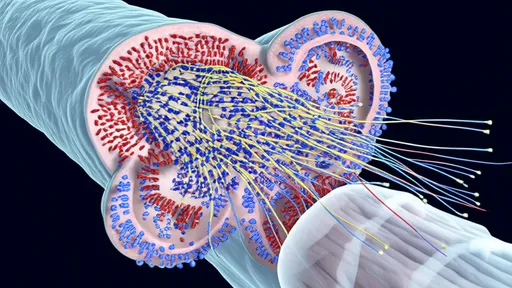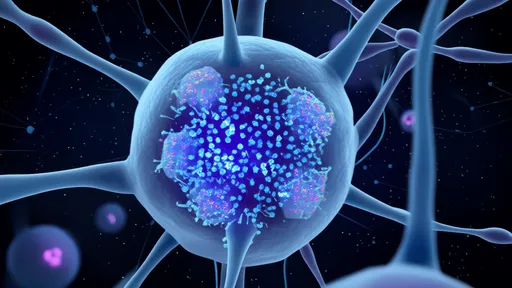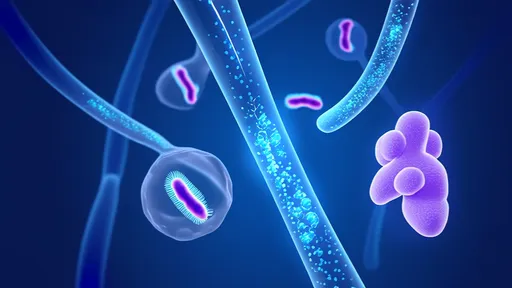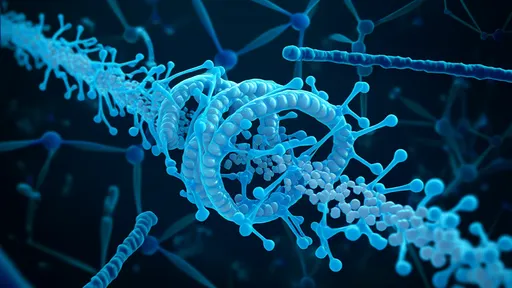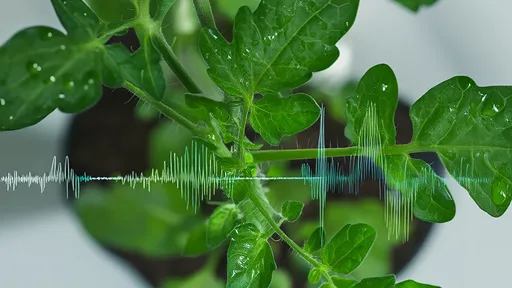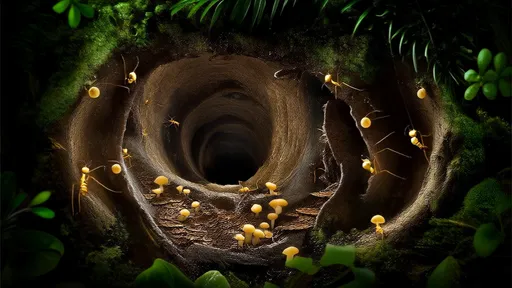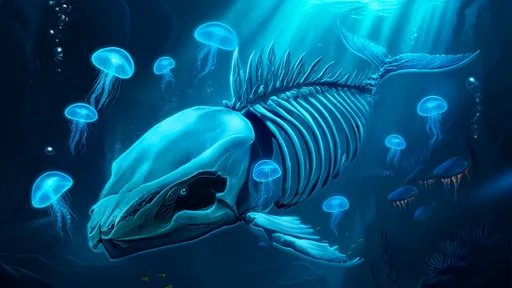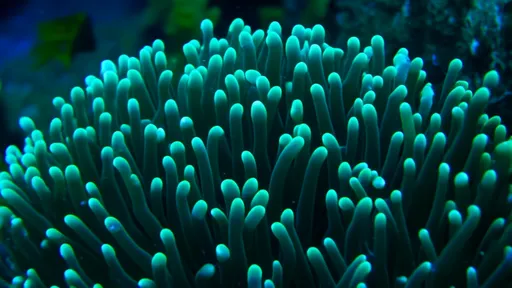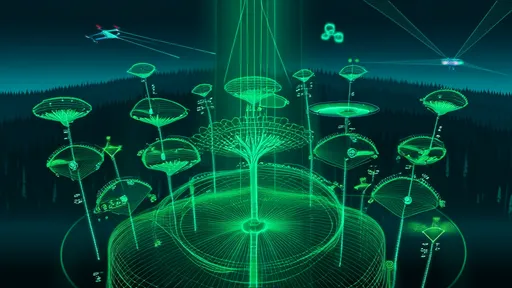Scientists have uncovered a startling new pathway by which gut microbes communicate with the brain at lightning speed. Dubbed the "10-second gut-brain superhighway," this discovery centers on the vagus nerve's ability to transmit microbial signals faster than previously thought possible. The findings could revolutionize our understanding of conditions ranging from depression to irritable bowel syndrome.
The study, published in Nature Neuroscience, reveals that certain gut bacteria produce neurotransmitters that activate vagal neurons directly. Unlike traditional signaling through hormones or immune molecules that take minutes or hours, this newly discovered route operates on a sub-10-second timescale. "We're seeing what amounts to a neural wire between your microbiome and your brain," remarked Dr. Elena Martinez, lead author from the Stanford Microbiome Project.
Researchers used advanced optogenetic techniques to track signals moving along the vagus nerve in real time. When specific bacterial metabolites were introduced to the gut lumen, corresponding neural firing patterns appeared in the brainstem within 6-8 seconds. This speed suggests the signals bypass traditional biochemical pathways entirely, traveling instead as electrical impulses along myelinated vagal fibers.
The implications extend far beyond basic science. Pharmaceutical companies are already exploring how to modulate this pathway for treating neurological disorders. Early-stage trials show promise for vagus nerve stimulation protocols that incorporate probiotic therapies. Meanwhile, nutritionists are reconsidering the concept of "brain foods" in light of this rapid communication system.
Surprisingly, the research also explains why certain gut feelings manifest so quickly during emotional states. "That sinking sensation when you receive bad news or butterflies before public speaking - we now suspect these involve direct microbial-to-neural signaling," explained Martinez. The team found that stress hormones alter gut permeability within seconds, allowing bacterial compounds faster access to vagal nerve endings.
Critically, the study identifies particular bacterial strains most active in this superfast signaling. Species producing gamma-aminobutyric acid (GABA) and certain short-chain fatty acids appear dominant. This specificity opens doors for precision microbiome therapies targeting mental health conditions through dietary interventions rather than pharmaceuticals.
The discovery also raises evolutionary questions. The researchers propose that this ultra-rapid pathway may have developed as an early warning system, allowing gut microbes to alert the brain about ingested toxins before full absorption occurs. In modern humans, the same system appears repurposed for emotional regulation and metabolic control.
As research continues, scientists caution against oversimplifying the gut-brain connection. While the 10-second pathway represents a major breakthrough, it operates alongside slower, more established communication routes. The interplay between these systems likely creates the complex gut-brain dialogue influencing everything from food choices to mood disorders.
Clinicians emphasize that this discovery doesn't reduce mental health to gut bacteria alone. Rather, it adds another layer to our understanding of neurobiology. "We're not saying depression is just a microbiome problem," stresses Martinez. "But we are saying we've found a previously unknown channel that clearly influences brain function in measurable ways."
The next phase of research will explore how factors like antibiotics, diet, and age affect this signaling speed. Preliminary data suggests the pathway may degrade with age, potentially explaining some neurological aspects of aging. Other teams are investigating whether enhancing this connection could improve cognitive function in neurodegenerative diseases.
This breakthrough exemplifies how much remains unknown about human physiology. As one commentator noted, "We've mapped the human genome and landed probes on Mars, yet we're still discovering fundamental wiring within our own bodies." The gut-brain superhighway reminds us that sometimes the most profound discoveries lie not in distant galaxies, but in the intimate connections between our microbial passengers and the neural networks they help shape.
For decades, the blood-brain barrier (BBB) has stood as a formidable gatekeeper, selectively shielding the brain from harmful substances while frustrating efforts to deliver life-saving therapeutics. This biological fortress, while essential for protecting our most vital organ, has rendered many promising treatments for neurological disorders ineffective. Now, a groundbreaking approach combining protein engineering and artificial intelligence is cracking the code to safe BBB penetration, potentially revolutionizing treatment for Alzheimer's, Parkinson's, and brain cancers.
In a groundbreaking development that could revolutionize the treatment of spinal cord injuries, researchers have successfully engineered hydrogel-based optical fibers capable of mimicking neural pathways. These "neural optical fibers" represent a fusion of advanced materials science and neurobiology, offering new hope for patients with previously untreatable damage to their central nervous system.
In a groundbreaking discovery that could revolutionize our approach to plastic waste, scientists have identified a surprising ally in the fight against polyethylene pollution: the humble wax worm. More specifically, the bacteria residing in the gut of these caterpillar-like creatures have demonstrated an extraordinary ability to break down one of the world's most stubborn plastics. This finding opens new avenues for tackling the global plastic crisis through biological means.
In a groundbreaking development that challenges our understanding of aging, scientists have demonstrated the potential to reverse cellular aging through a technique called transient reprogramming. This approach temporarily rewinds the epigenetic "clock" of cells without erasing their identity, opening new possibilities for regenerative medicine and age-related disease treatment.
In a groundbreaking leap for precision medicine, researchers have unveiled a light-controlled CRISPR delivery system using DNA-origami "nanodrones" – a fusion of nanotechnology and gene editing that promises unprecedented control over therapeutic targeting. This innovation, emerging from a collaboration between bioengineers and geneticists, reimagines drug delivery by combining the programmability of DNA nanostructures with the spatial precision of optogenetics.
In a groundbreaking study that could reshape our understanding of consciousness, neuroscientists have identified the thalamic reticular nucleus (TRN) as a potential "rhythmic switch" governing wakefulness through gamma wave modulation. This almond-shaped inhibitory structure, often described as the brain's gatekeeper, appears to orchestrate states of awareness by tuning neural oscillations like a conductor leading a symphony of consciousness.
For decades, chronic pain has remained one of medicine's most elusive challenges – a complex interplay of biological, psychological, and social factors that often defies conventional treatment. Now, groundbreaking research into the spinal cord's neural "fingerprints" of pain is revolutionizing our understanding of how persistent pain becomes etched into the nervous system. Scientists are mapping specialized neural circuits that appear to encode chronic pain with remarkable specificity, opening new avenues for targeted therapies.
In a groundbreaking discovery that reshapes our understanding of brain metabolism, researchers have identified glial cells as the unsung architects of neuronal energy distribution. The study reveals how these long-overlooked support cells orchestrate the precise mitochondrial allocation to neurons, challenging the neuron-centric dogma of neuroscience. This paradigm shift underscores glial cells' role as metabolic conductors in the symphony of brain function.
Scientists have uncovered a startling new pathway by which gut microbes communicate with the brain at lightning speed. Dubbed the "10-second gut-brain superhighway," this discovery centers on the vagus nerve's ability to transmit microbial signals faster than previously thought possible. The findings could revolutionize our understanding of conditions ranging from depression to irritable bowel syndrome.
In a groundbreaking discovery that bridges molecular biology and neuroscience, researchers have uncovered how the CPEB protein acts as a "molecular glue" to solidify long-term memories through an elegant phase transition mechanism. This finding not only revolutionizes our understanding of memory persistence but also reveals nature's ingenious solution to maintaining information at the molecular level.
In a groundbreaking discovery that blurs the line between botany and acoustics, researchers have uncovered evidence of tomatoes employing ultrasonic warfare against herbivorous insects. The study, published in Nature Plants, reveals how tomato plants emit high-frequency sounds when under attack - not as passive victims, but as active participants in their own defense.
In the dense rainforests of Central and South America, leafcutter ants have perfected an architectural marvel that puts human climate control systems to shame. These tiny engineers construct elaborate underground nests spanning hundreds of square feet, maintaining near-perfect temperature and humidity levels year-round – without using a single watt of electricity. As architects and engineers grapple with the urgent need to reduce building emissions, these insect-built structures offer profound lessons in passive climate regulation.
The depths of the ocean hold secrets that continue to astonish scientists, and among the most enigmatic phenomena is the "whale fall"—the carcass of a deceased whale sinking to the seabed. These massive organic deposits create transient ecosystems, supporting diverse marine life for decades. But beyond the visible scavengers and bone-eating worms, a hidden microbial world thrives, and within it, something extraordinary has been discovered: colossal bacteriophages, viruses that prey on bacteria, with genomes so large they defy conventional understanding.
In a groundbreaking discovery that could revolutionize coral reef monitoring, scientists have identified a natural early warning system for coral bleaching events. Certain coral species exhibit vivid fluorescent patterns when under thermal stress, acting as biological "sentry lights" that signal the onset of bleaching before visible damage occurs. This phenomenon, observed in reef-building corals across the Indo-Pacific, represents nature's own climate change alert system.
In a groundbreaking development for ecological research and climate science, researchers have harnessed advanced LiDAR technology to map the photosynthetic efficiency of trees across vast forested areas. Dubbed the "carbon pulse" of forests, this innovative approach provides unprecedented insights into how trees absorb and process carbon dioxide at an ecosystem scale. The implications for understanding carbon sequestration, forest health monitoring, and climate change mitigation strategies are profound.
